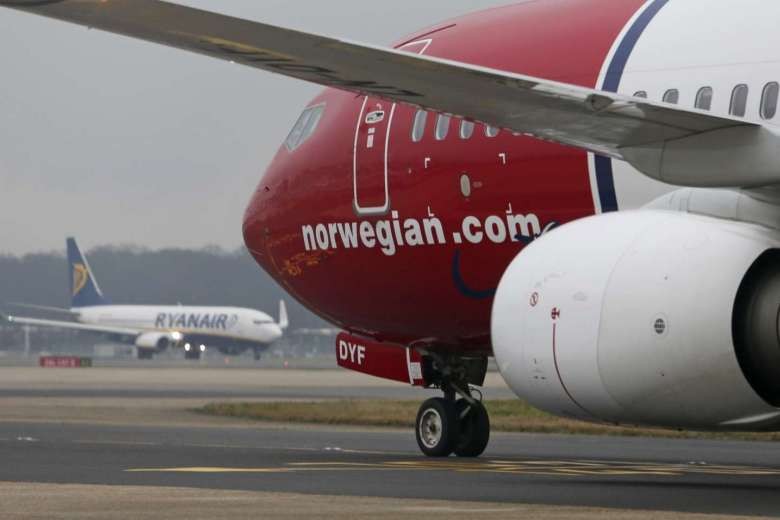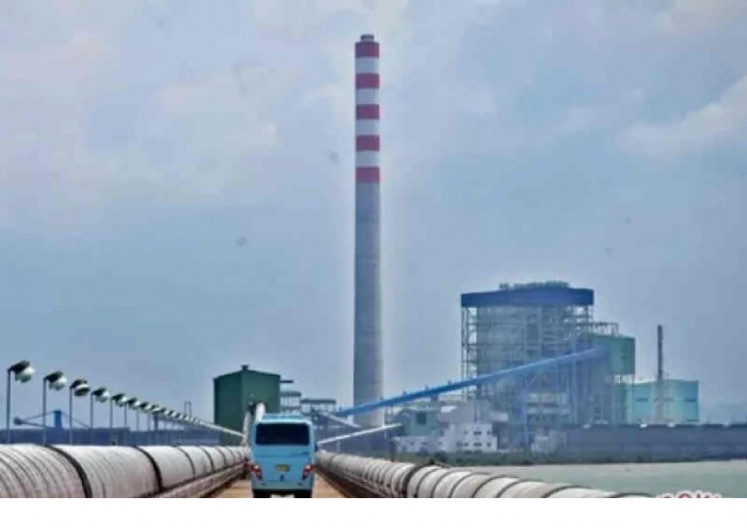Popular Reads
Top Results
Can't find what you're looking for?
View all search resultsPopular Reads
Top Results
Can't find what you're looking for?
View all search resultsNorwegian's Singapore-UK route a boon for Changi Airport
Change text size
Gift Premium Articles
to Anyone
W
hen European carrier Norwegian starts flying between London's Gatwick Airport and Singapore in September, it will be the longest long-haul budget flight ever operated.
The 10,841km trip will take just under 13 hours for those traveling here and about an hour longer on the way to Gatwick.
Singapore will be the second Asian destination, after Bangkok - which it launched in June 2013 - for Norwegian, which operates long- haul flights mainly between Europe and the United States.
The launch of its London-Singapore service will boost Changi's status as an airport of choice and hub for all types of carriers, analysts said.
The move could compel Singapore Airlines (SIA) and British Airways, which now dominate flights to London's Heathrow, to offer travelers sweeter deals, they added.
To mark the new route, Norwegian is offering a return fare of £348.90 (S$630) with all taxes in. An upgrade with a choice of seat, food and checked baggage will cost £449.80 - about $400 less than an SIA flight, which costs about $1,200. All seats on Norwegian's long-haul flights come with an individual entertainment screen.
Apart from affordable fares, travelers from Singapore can also access the airline's network from Gatwick. The airline covers more than 50 destinations in Europe and the US, Norwegian's chief executive, Mr Bjorn Kjos, told The Straits Times.
Read also: Norwegian Air Shuttle to launch ultra low-cost $230 London-Singapore route
It will be tricky for budget carriers to sustain long-haul business, say analysts
The Singapore partnership could deepen, with benefits for the airline, Changi Airport and travellers, said the Centre for Aviation's Mr Brendan Sobie.
Norwegian is reportedly considering flights to Singapore from Paris, Barcelona and Oslo, the capital of Norway, and could also partner Asian budget airlines to expand its network in this region, he said.
For Changi, budget routes to Europe are particularly attractive in a market that has been "relatively stagnant" in the last few years, Mr Sobie said.
Not all are convinced, though, that long-haul budget carriers can survive in the long term. Aviation history is littered with those who tried but failed.
Casualties include Hong Kong-based Oasis from the early 2000s and Viva Macau, which started long-haul operations about a decade ago. Both no longer exist.
Unlike short-haul budget carriers that make money driving traveler volumes with short flights, quick turnarounds and high aircraft utilization rates, longer flights do not enjoy the same benefits.
Still, Norwegian, Jetstar, AirAsia X and SIA's Scoot have managed to make the business work, even if tough times have seen red numbers in the books and routes being dropped from time to time.
Others are keen to emulate Norwegian, said Mr Shukor Yusof, aviation analyst at Endau Analytics.
Read also: AirAsia X gets license to fly to US
IAG, owner of British Airways, has launched Level, a new budget long-haul airline that would initially fly to Los Angeles, Oakland, Buenos Aires and Punta Cana in the Dominican Republic from next month. Icelandic discount carrier WOW Air has said it would go transatlantic from July.
Two key factors are driving the revival of such carriers - sub-US$50 oil prices per barrel for a few years now and new fuel-efficient planes like the Boeing 787 and Airbus 350.
Mr Shukor said: "We've said before that low-cost, long-haul isn't impossible, but it's just very, very tricky to succeed."
Integrating their short-haul and long-haul operations have also helped AirAsia X and Jetstar, said Mr Kent Yar, who heads the aerospace and aviation team at Cornerstone Global Partners. More than eight in 10 of AirAsia X's passengers connect on other carriers within the group, the airline has said.
Mr Abbas Ismail, course manager of aviation management and services at Temasek Polytechnic, said: "This is a cyclical business. The economy has improved, fuel prices have lowered, capacity has reduced, so low-cost carriers are filling the gap that the full-service airlines have left behind in their eagerness to cut capacity during the downturn."
He warned though that if fuel prices rise, long-haul budget carriers could cut services again.
Mr Chuck Ng, 47, an information technology manager who has flown budget carriers from New Zealand and Australia to Singapore, said that while it means fewer frills, the experience can be better than flying with some "not very good" full-service airlines.
While the difference in fares may not always be significant, especially when full-service airlines dangle discounts, "I always try and support budget carriers", he said.
"If not for them, I don't think full-service airlines would ever offer attractive discounts," he said.
This article appeared on The Straits Times newspaper website, which is a member of Asia News Network and a media partner of The Jakarta Post







